1910Dedham Country and Polo Club (Dedham, MA) - 9 Holes, New in 1910?, NLE?2018 DRS Update - Date changed to 1915Not noted in the 1930 Ross Booklet.The DRS might want to update this to 1915.
Feb. 1, 1914 Boston Globe -
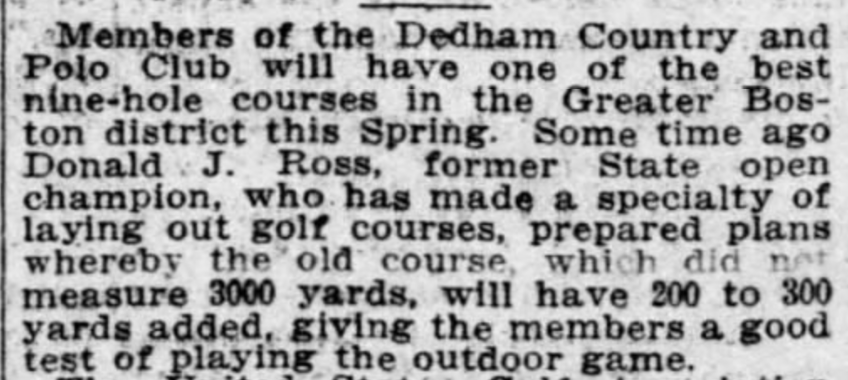
May 28, 1915 Boston Daily Globe -
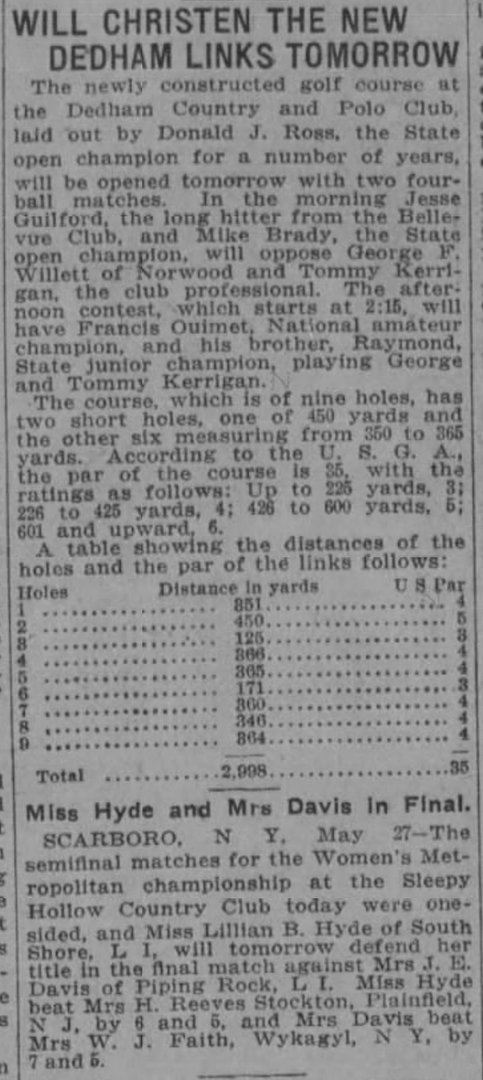
May 30, 1915 Boston Daily Globe -
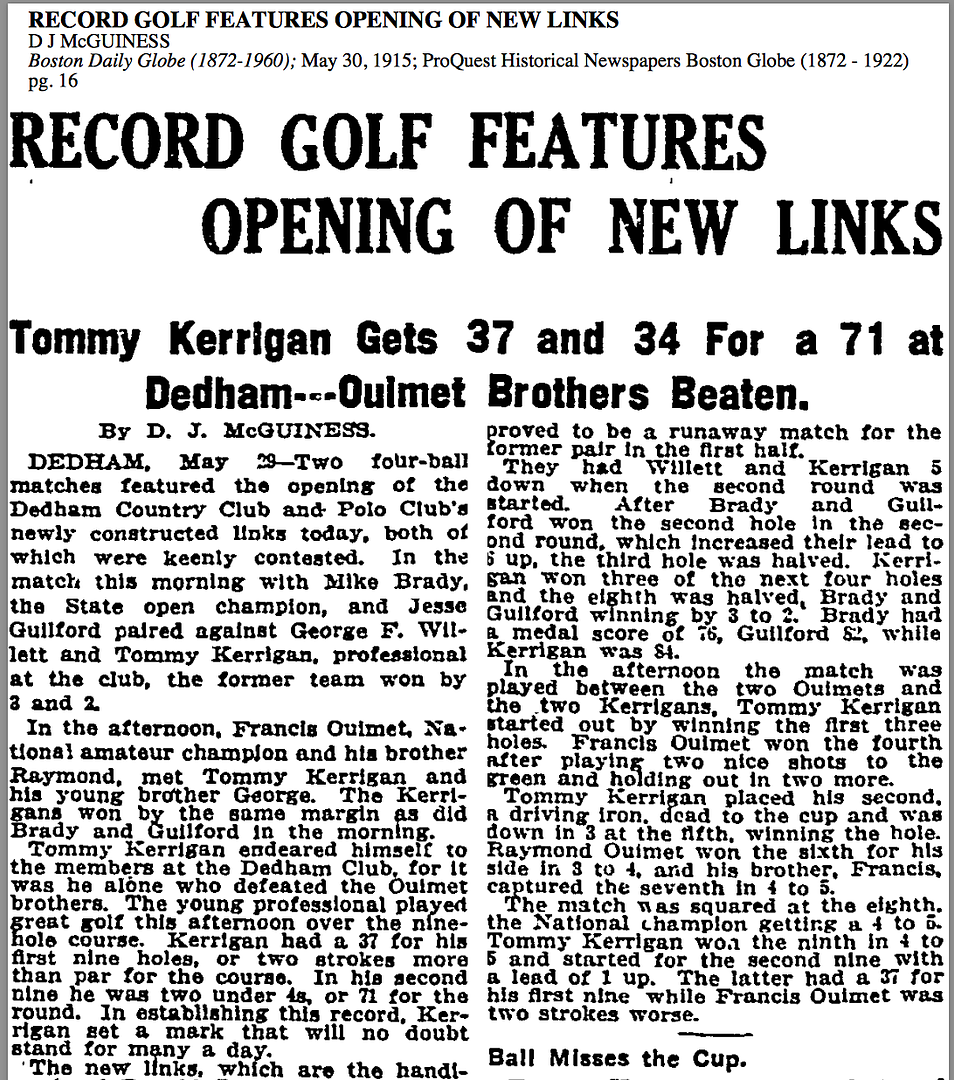
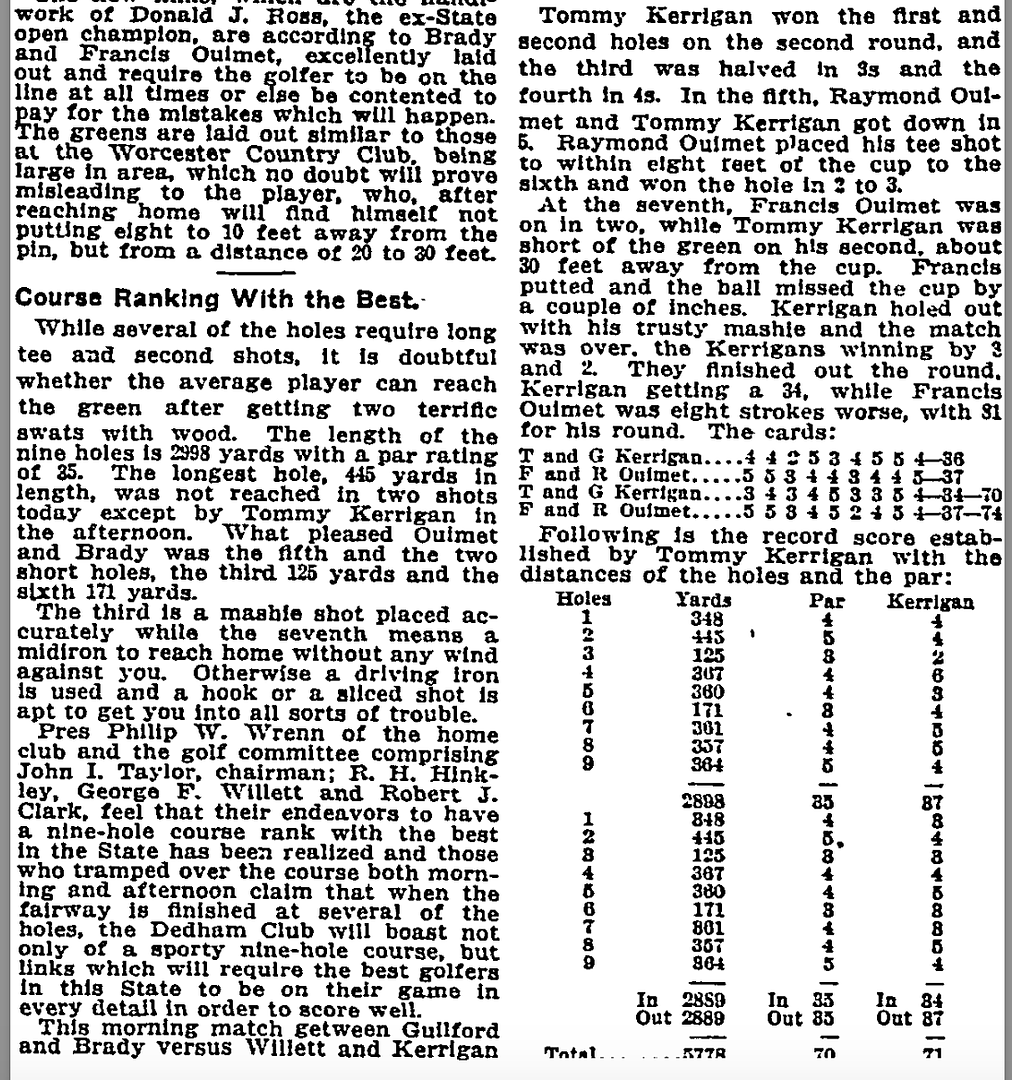
A 1923 "Confidential" letter from Ross to Leonard Tufts describing why he turned down doing any subsequent work at Dedham.
 Wellesley Country Club (Wellesley, MA) - 9 Holes, New in 1910, Still in ExistenceNot noted in the 1930 Ross Booklet.
Wellesley Country Club (Wellesley, MA) - 9 Holes, New in 1910, Still in ExistenceNot noted in the 1930 Ross Booklet.I have no contemporaneous reports of Ross at Wellesley, and would love to see some. The timing and location make sense, but it would be nice to see something concrete to lock this one down.
Chevy Chase Club (Chevy Chase, MD) - 18 Holes, Remodel in 1910, Still in ExistenceNot included in the 1930 Ross Booklet.I'm not sure if describing this as an 18 hole remodel is entirely accurate, as it would seem that Ross added a number of new holes. The date here should probably be 1909, although Ross did return in 1910 to add bunkers.
May 10, 1909 Evening Star -

Sept. 12, 1909 Evening Star -

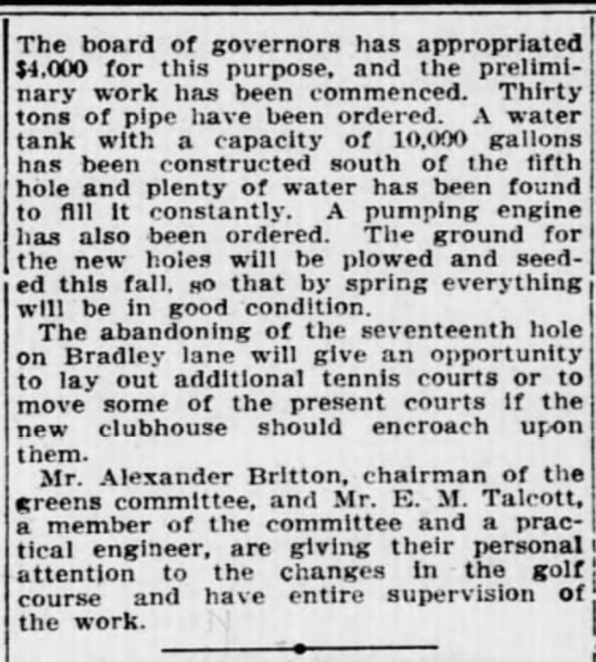
May 1910 Golf Magazine -
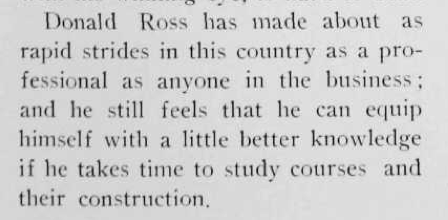
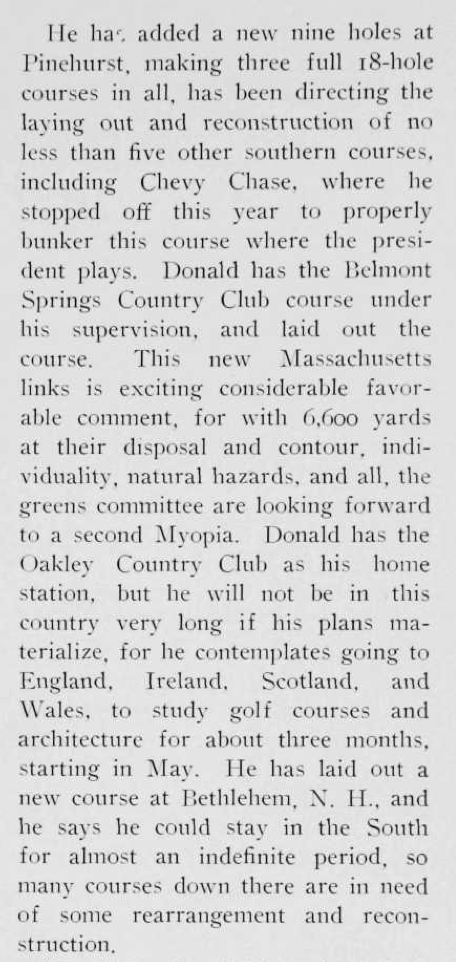 Hillandale Country Club (o/k/a Durham CC) (Durham, NC) - 9 Holes, New in 1910, NLE in 1961Not included in the 1930 Ross Booklet.
Hillandale Country Club (o/k/a Durham CC) (Durham, NC) - 9 Holes, New in 1910, NLE in 1961Not included in the 1930 Ross Booklet.I can find no information on Ross working here in 1910, and that date is probably off as a Jan. 1912 American Golfer article notes the planned opening of the first 9 holes of the course. The 1928 article below notes plans for a new course by Ross (although the Annual Guides from 1916 - 1921 noted an 18 hole course under construction). Hillandale, like quite a few other early Ross courses with little to no source materials, does not have an entry on the Given Memorial Library website.
Feb. 2, 1928 The Daily Tarheel -
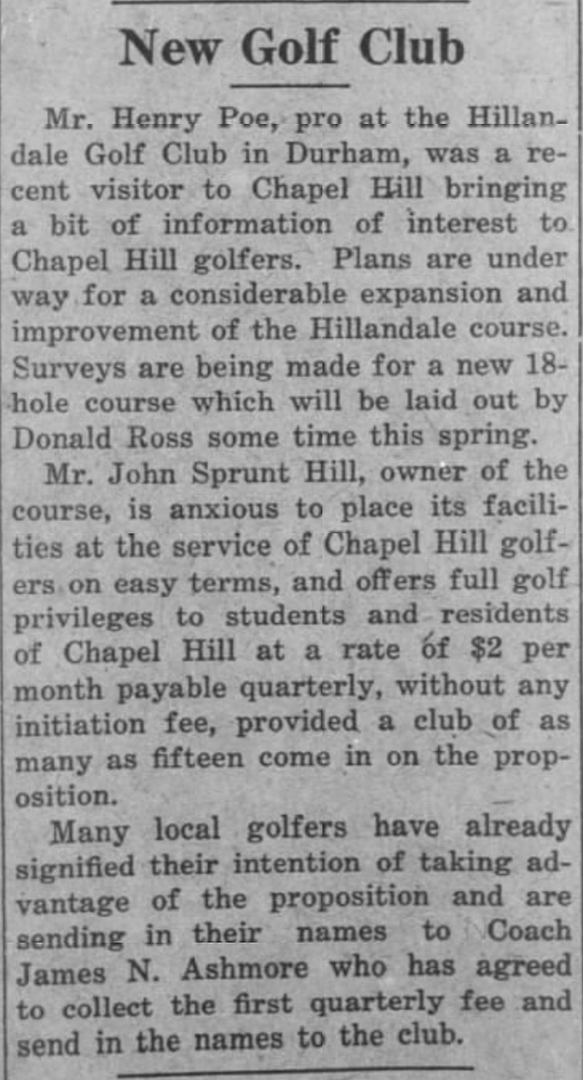 Overhills Golf Club (Overhills, NC) - 9 Holes, New in 1910, 9 Holes, New in 1918, NLENot included in the 1930 Ross Booklet.
Overhills Golf Club (Overhills, NC) - 9 Holes, New in 1910, 9 Holes, New in 1918, NLENot included in the 1930 Ross Booklet.Other than some possible discrepancies over the date (the course having most likely been laid out after 1910, an important date in the Ross timeline which we'll discuss later), this listing is fairly accurate. Overhills was covered in detail by Chris Buie in an earlier thread, one that should stand out as a benchmark for historical analysis -
http://www.golfclubatlas.com/forum/index.php/topic,46197.0.htmlFeb. 1917 Golf Illustrated -

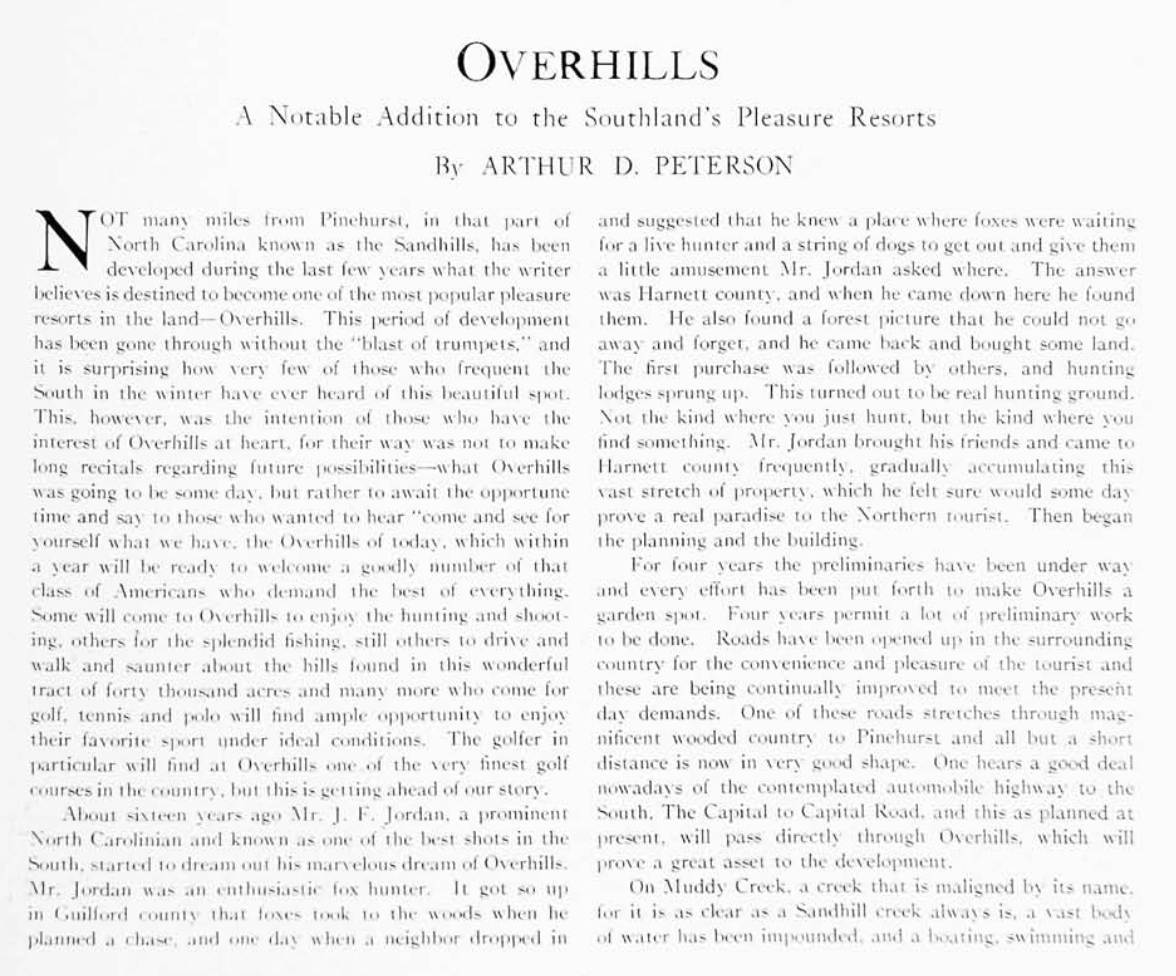
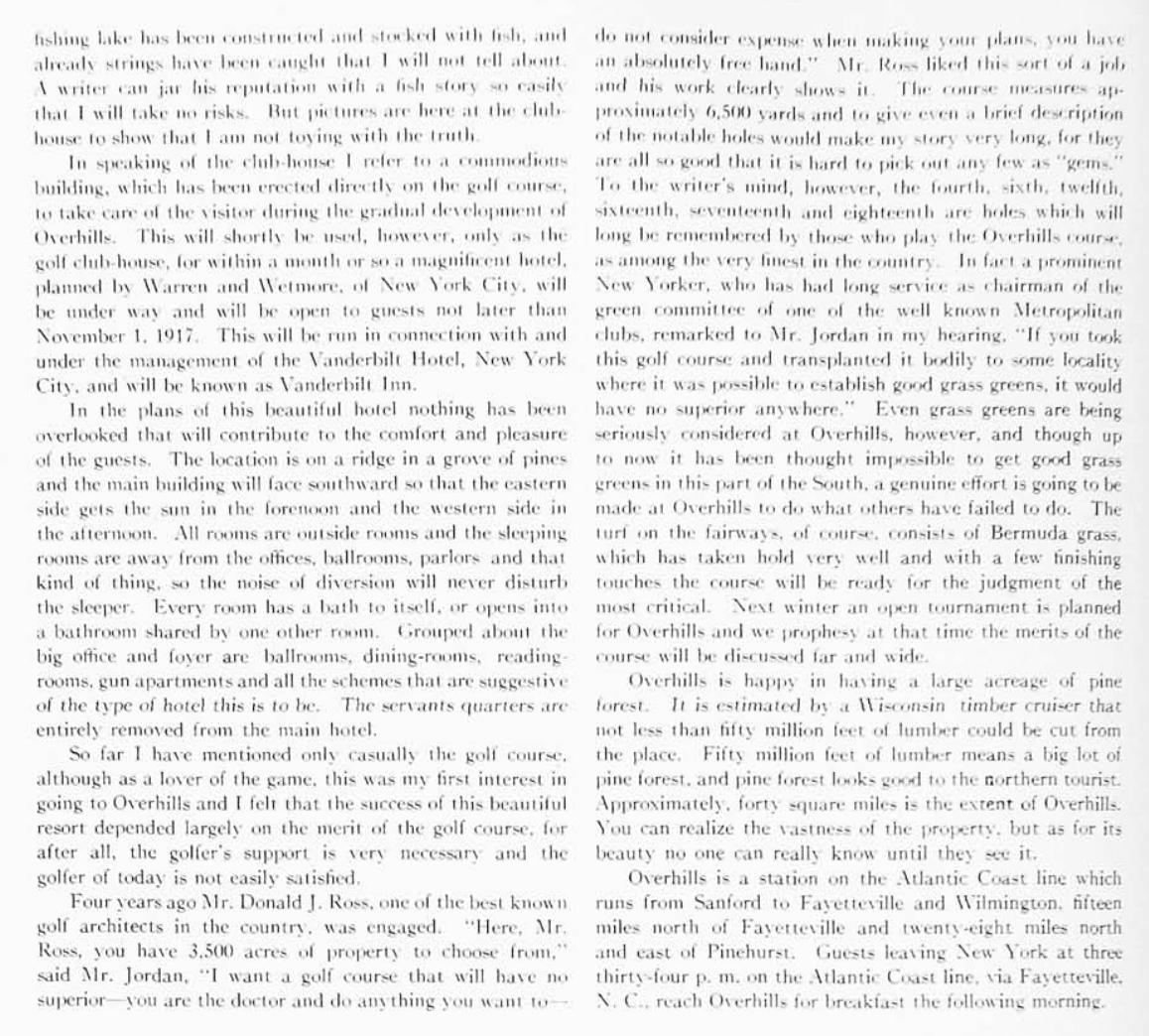
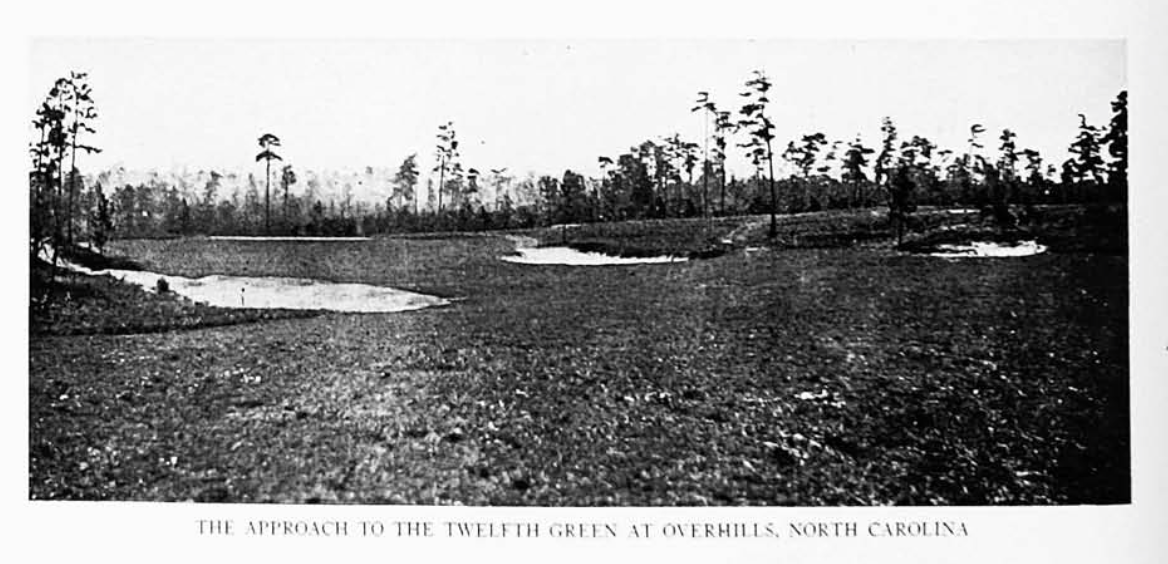
Course Plan (the notes indicate that this was prepared after 1910) -
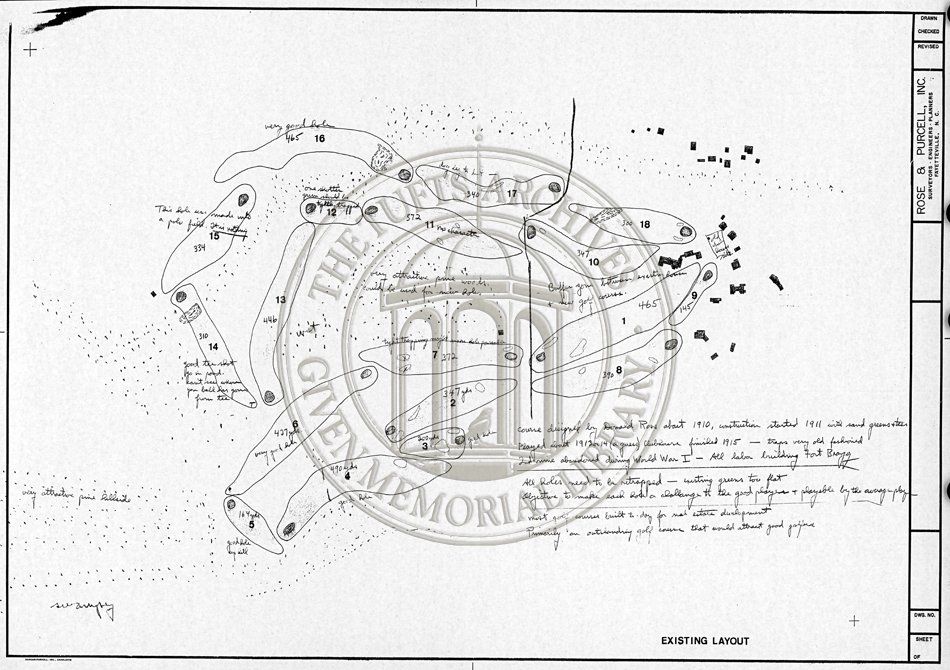 Bethlehem Country Club (Bethlehem, NH) - 13 or 14 Holes, New in 1910, 4 or 5 Holes, Remodel in 1910, Still in ExistenceNot included in the 1930 Ross Booklet.
Bethlehem Country Club (Bethlehem, NH) - 13 or 14 Holes, New in 1910, 4 or 5 Holes, Remodel in 1910, Still in ExistenceNot included in the 1930 Ross Booklet.Date should be 1909. In addition to the articles below, please see the May 1910 Golf Magazine article posted above under Chevy Chase and the June 17, 1916 The Evening Post article in post #47 below.
July 4, 1909 New York Tribune -
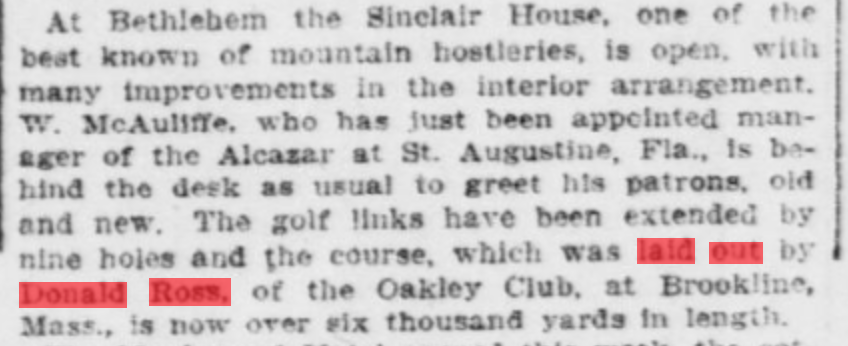
June 1910 Golf Magazine -

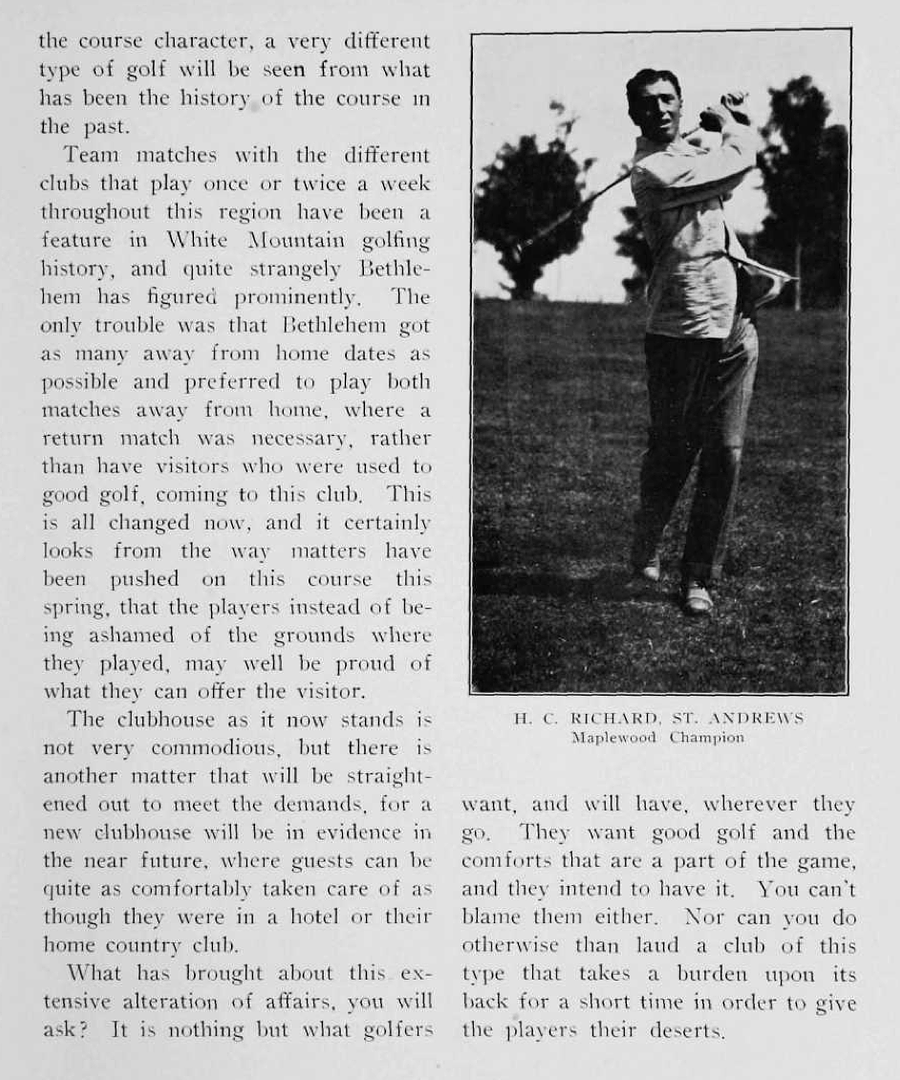
June 25, 1911 Washington Herald -
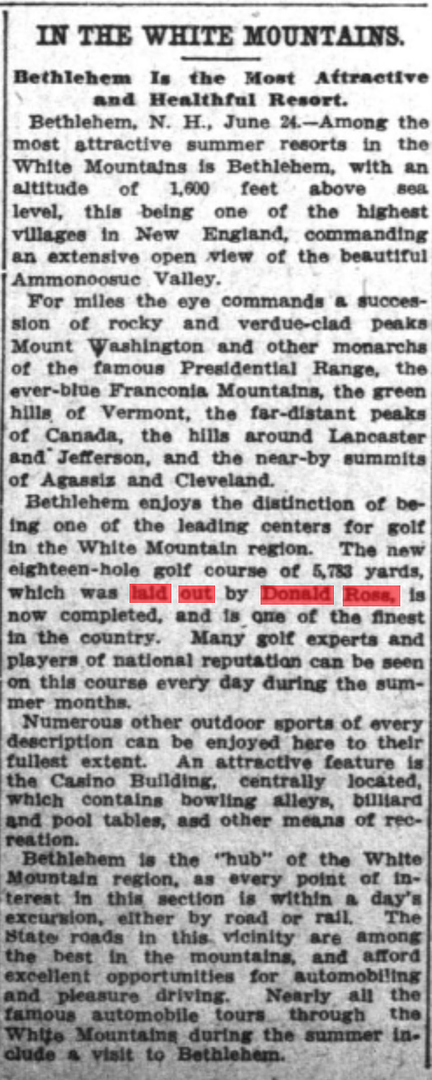 Cherokee Country Club (Knoxville, TN) - 18 Holes, New in 1910, 18 Holes, New in 1925, Still in Existence2018 DRS Update - Now just an 18 Hole Remodel in 1919-22Not included in the 1930 Ross Booklet.
Cherokee Country Club (Knoxville, TN) - 18 Holes, New in 1910, 18 Holes, New in 1925, Still in Existence2018 DRS Update - Now just an 18 Hole Remodel in 1919-22Not included in the 1930 Ross Booklet.Another mystery, especially with regards to the 1910 date. The April 1908 edition of Golf Magazine noted that a 9 hole course had been laid out by Bernard Nicholls, with plans to add 9 more holes later. There are reports of those plans in 1910, and later in 1914 the Spalding Official Golf Guide noted they had been carried out. What adds a wrinkle to any Ross involvement at that time is the H. H. Barker activity covered in the article below. As for any subsequent work on an entirely new 18 hole course in 1925, I have yet to find any confirmation. Like Hillandale above, the Given Memorial Library has no information on any activity at Cherokee.
June 29, 1916 Daily Arkansas Gazette -
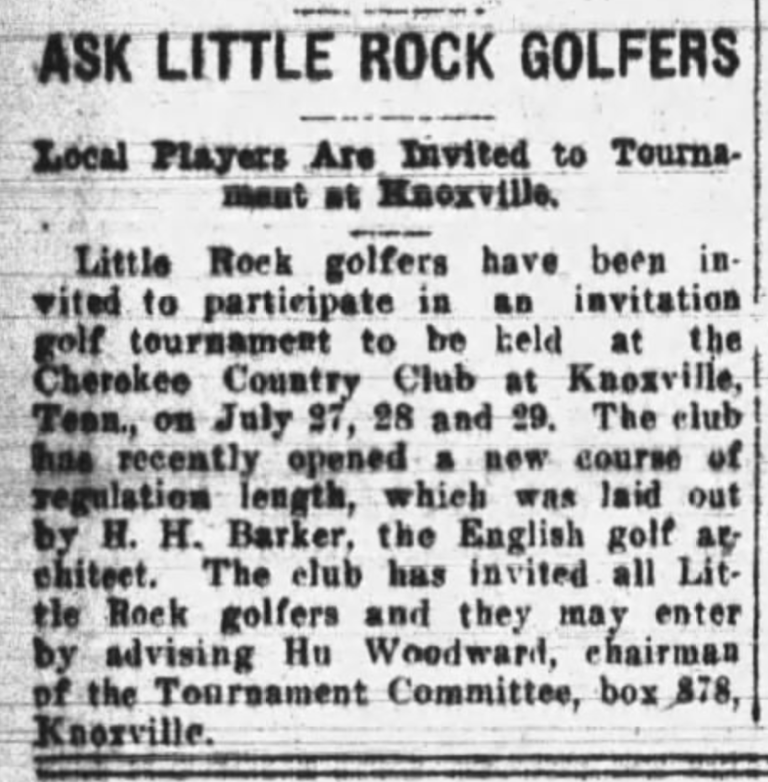
Update: Ross showed up in 1919 to remodel the existing course.
Dec. 22, 1919 Journal and Tribune -
 Addition:Essex Fells CC (Essex Fells, NJ)Not included in the 1930 Ross Booklet.
Addition:Essex Fells CC (Essex Fells, NJ)Not included in the 1930 Ross Booklet.Essex Fells is one of those cases where Ross' involvement has been reported so much that it seems like it must be fact. But again, I can find no reports of him doing work at any time. I wanted to include this in the listing as a possibility, one that merits more research. The 1910 date is included as that is the date several sources give for when he added 9 holes to the existing course. Seeing as the extension to 18 was covered in the papers in 1916, that time frame would be a more likely candidate.